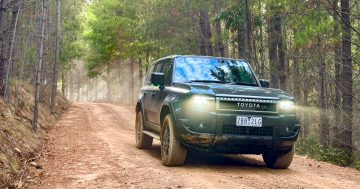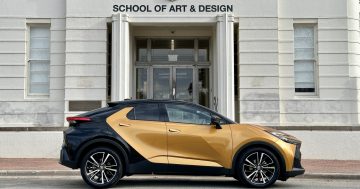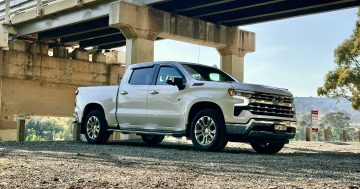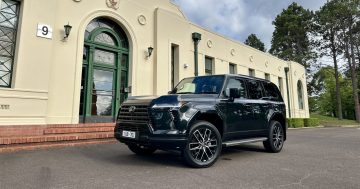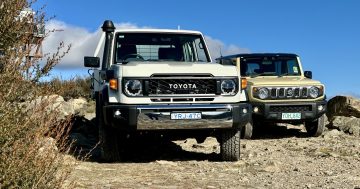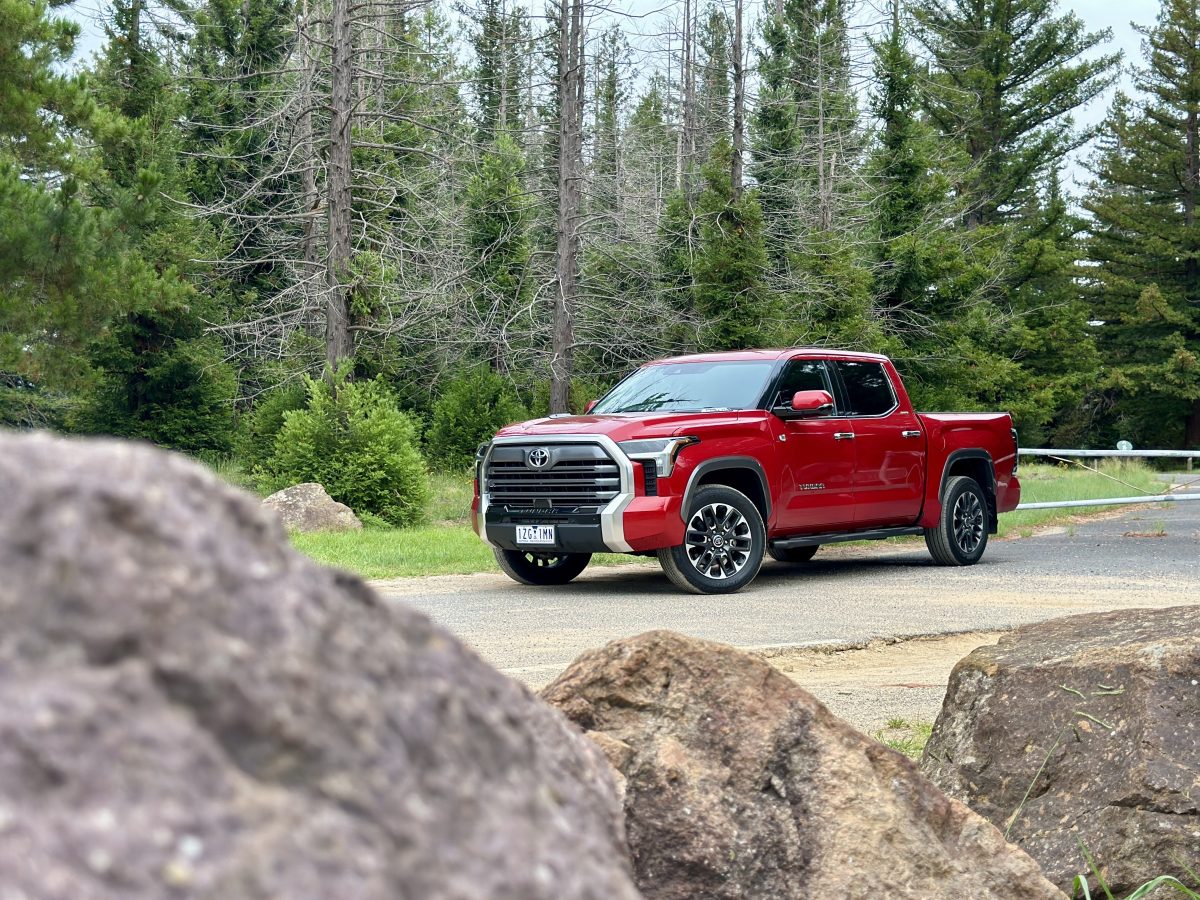
The Toyota Tundra Limited at the Pialligo Redwood Forest. Photo: James Coleman.
Of all the things to drive to a Greens-organised protest, a pick-up truck – and yes, ‘truck’ is the word for it – is about as great a faux pas as you can make.
And yet, when rolling into the Big Splash Waterpark car park to hear from a Greens MLA about how it must remain a waterpark and never be sold to developers to put up their apartments, I am unashamed. Because I’m in a Toyota Tundra, and therefore, a hybrid.
In fact, if you drive gingerly enough in ‘Eco’ mode, you can get up to about 50 km/h before the enormous 3.4-litre twin-turbo petrol V6 roars into action like a small jet taking off and your cover is blown into a million pieces.
While the Tundra is a new name on Australian highways, it’s been pounding US roads since 1999, and it’s become something of a legend.
Chances are you’ve heard about the model after the odometer in Louisiana man Victor Sheppard’s 2007 Tundra stopped ticking over – but only because he’d reached its six-digit 999,999-mile limit.
On inspection, Toyota later reported “the only area of the truck showing serious stress was the bed, which had been battered by the heavy equipment Sheppard, a veteran driver in the oil and gas industry, transported over the nine years he owned it”.
But about five years ago, when America’s other pick-up trucks began pouring into Australia, Toyota began to wonder if perhaps it was missing out.
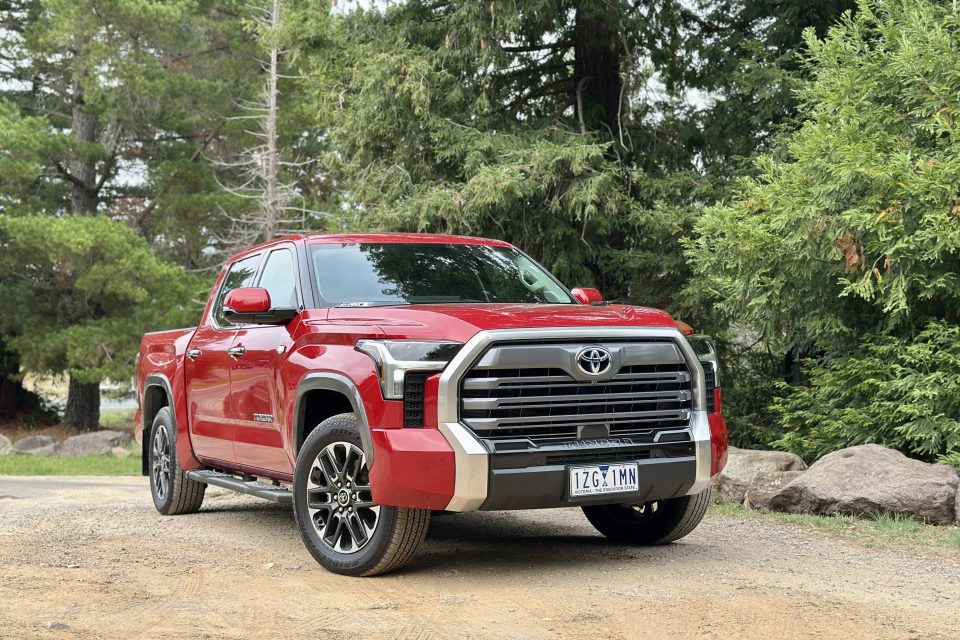
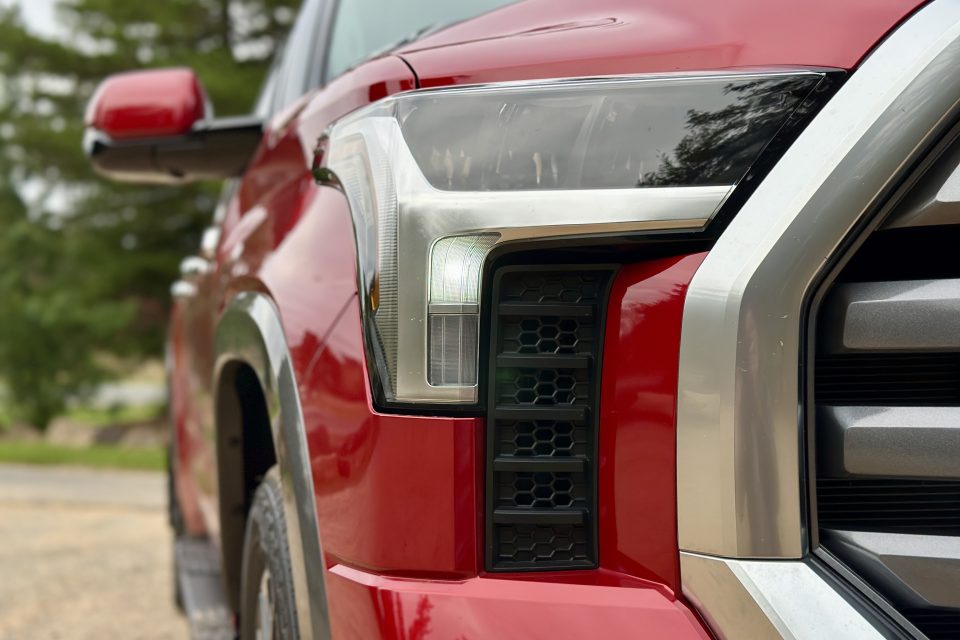
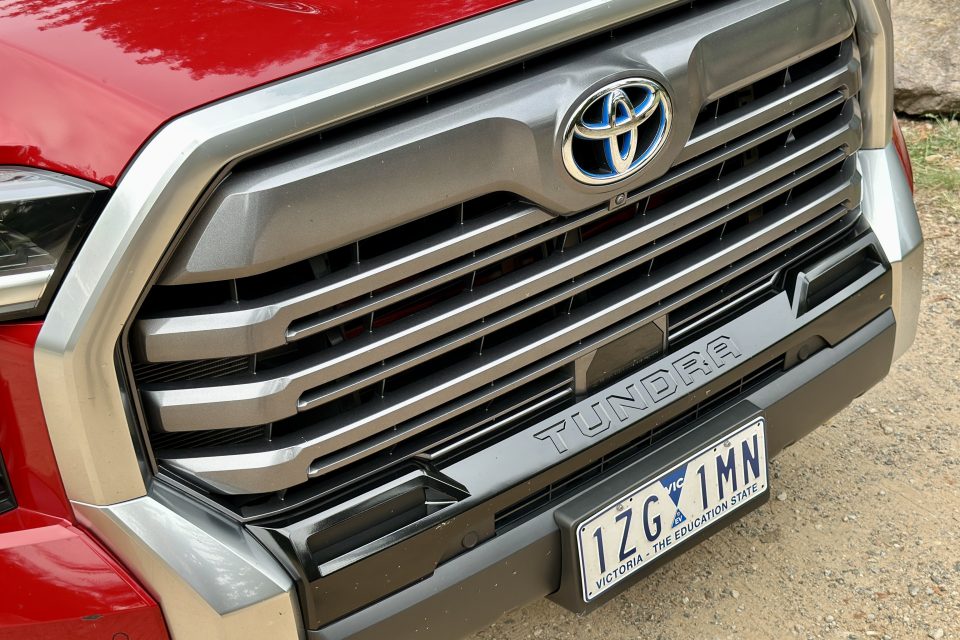
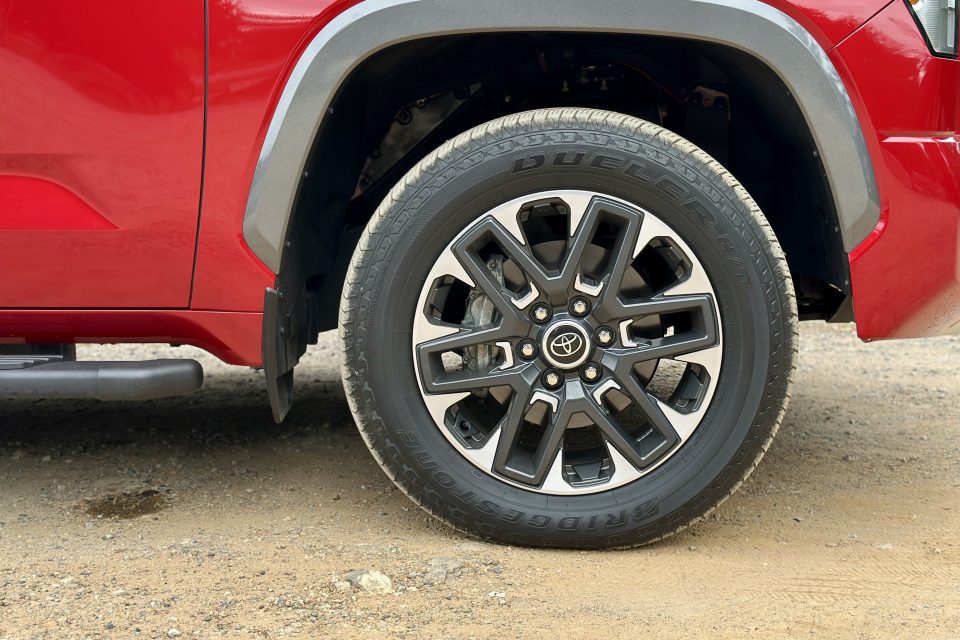
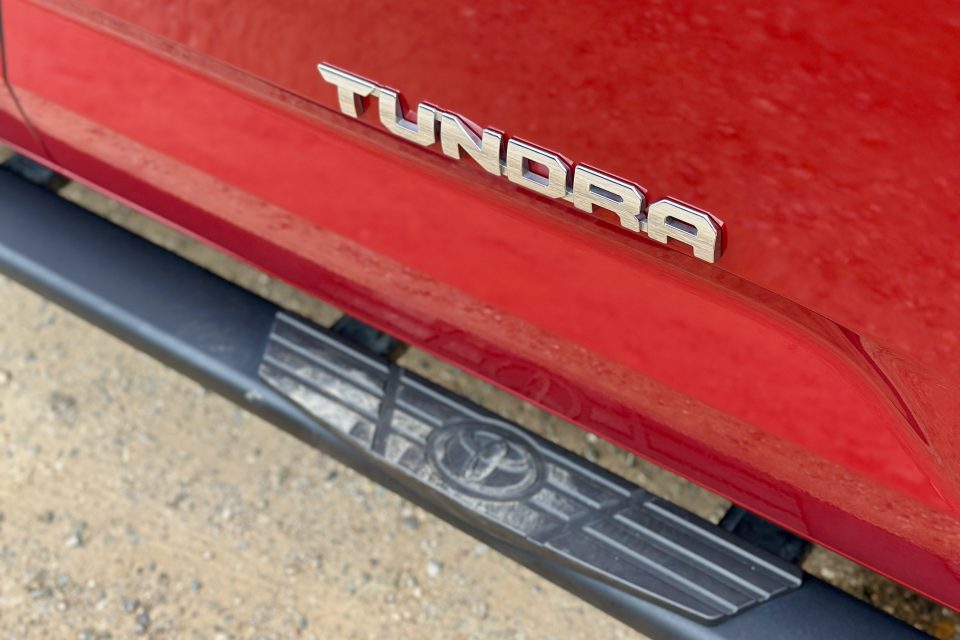
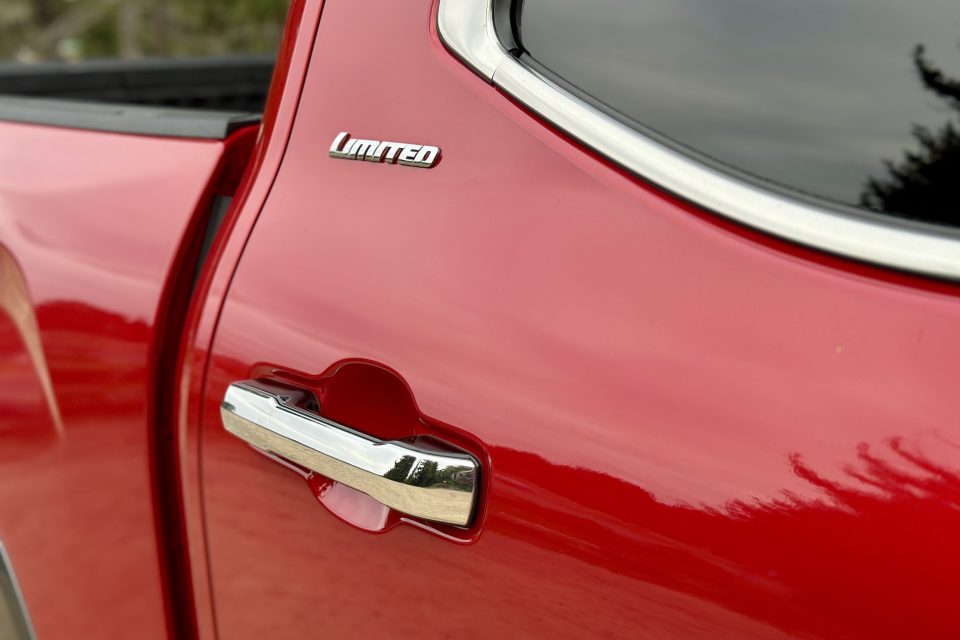
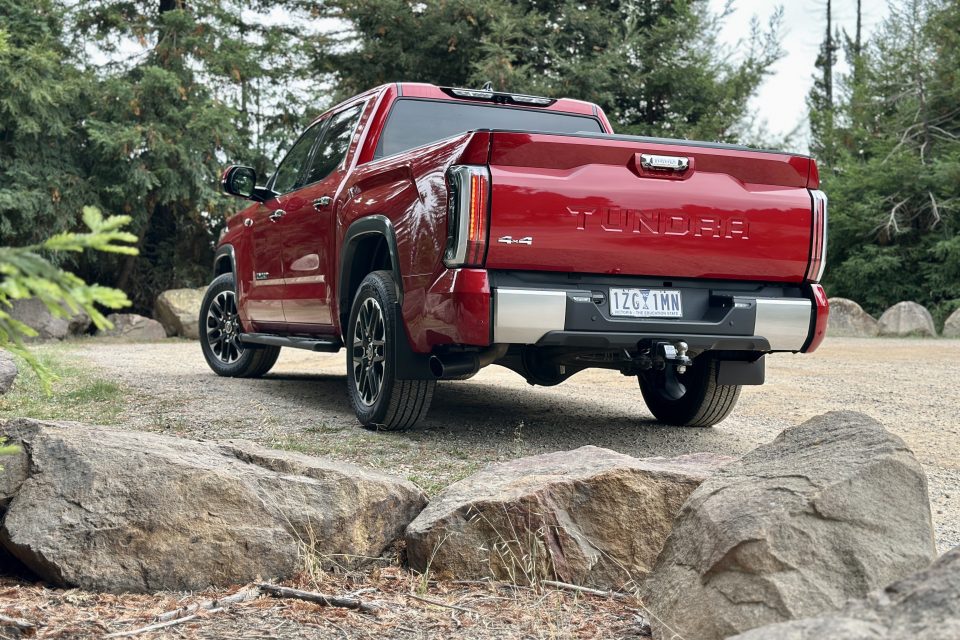
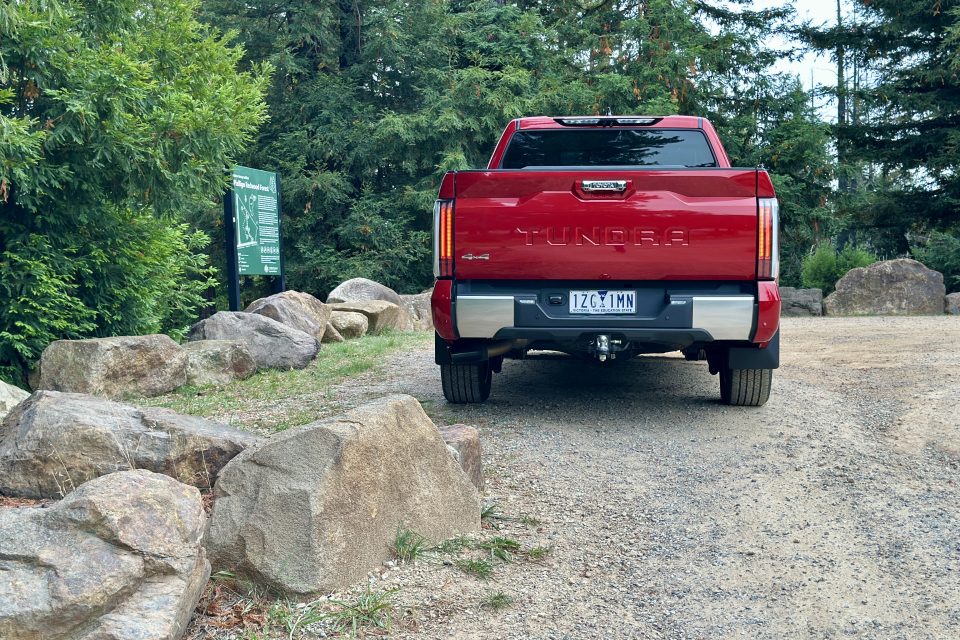
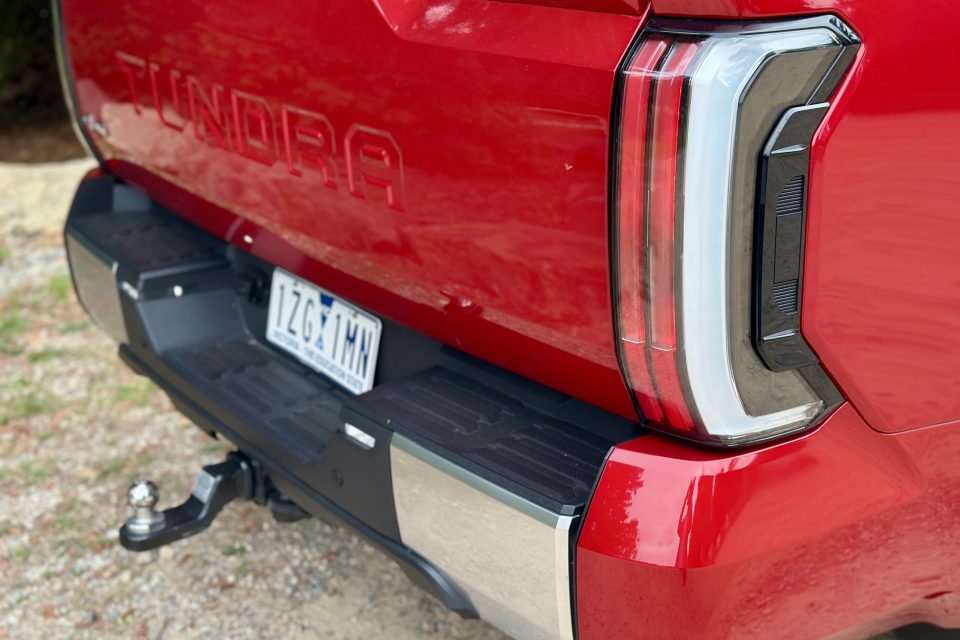
So in 2022, it struck a deal with the Walkinshaw Automotive Group in Melbourne that would have Tundras shipped in from Texas for Australian engineers to borrow pedals from the LandCruiser and the steering system from a Lexus LX to convert them to drive on the correct side of the road.
Like the other pick-ups, this does mean we’re paying more than our US counterparts – and there’s only one model variant. For now, that’s the ‘Limited’, from $155,990 plus on-road costs. That figure officially makes it the most expensive of the US-derived pick-ups.
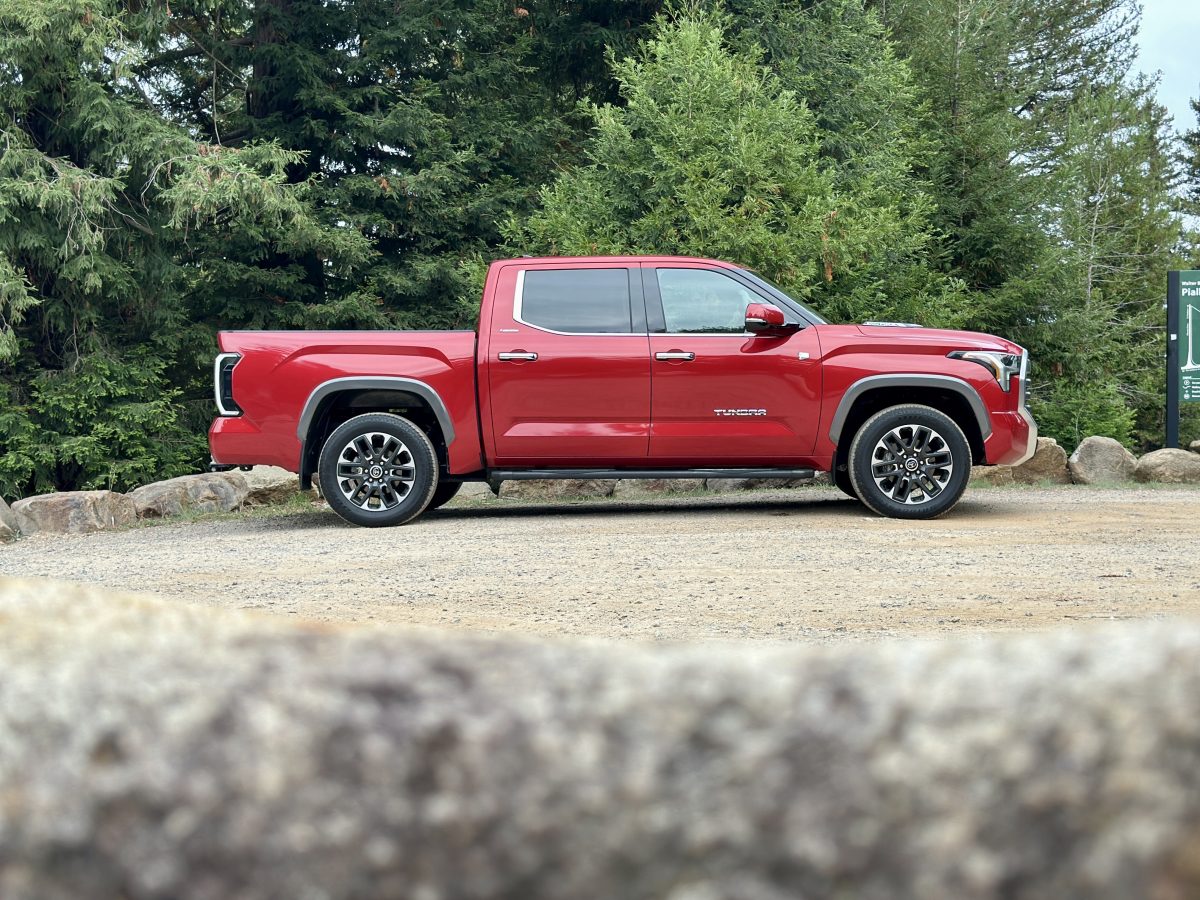
The Tundra is just shy of six metres long (5995 mm). Photo: James Coleman.
It also means the indicator stalk remains on the left – unusual for a Japanese car – and where ‘sync’ on most air-conditioning systems means the driver can adjust both sides from their button, not so here – the passenger has full control.
There’s not a lot of luxury for that chunk of change, either.
In true Toyota fashion, everything inside is flat, black or plastic, and with more rattle than I was expecting, particularly from the glovebox. Up front, you get heated and ventilated seats, but those in the back are just given air con and phone charging ports.
Storage is obviously its strong suit, along with towing.
Toyota claims it can pull up to 4.5 braked tonnes, which leaves the LandCruiser’s 3.5 tonnes for dust. And there are modes for “livestock” or “camping”, which fiddle with the gearbox and power steering.
My wife and I had the grand total of a pram in the Tundra’s tray during our time with it, but gadding about town, it felt like we were only scratching the surface of its immense power.
The suspension would wobble a beer belly quite considerably, but that’s also to be expected from an unladen pick-up. So the only complaint I would make is about the steering, which felt more fidgety on the highway than the Chevy Silverado’s.
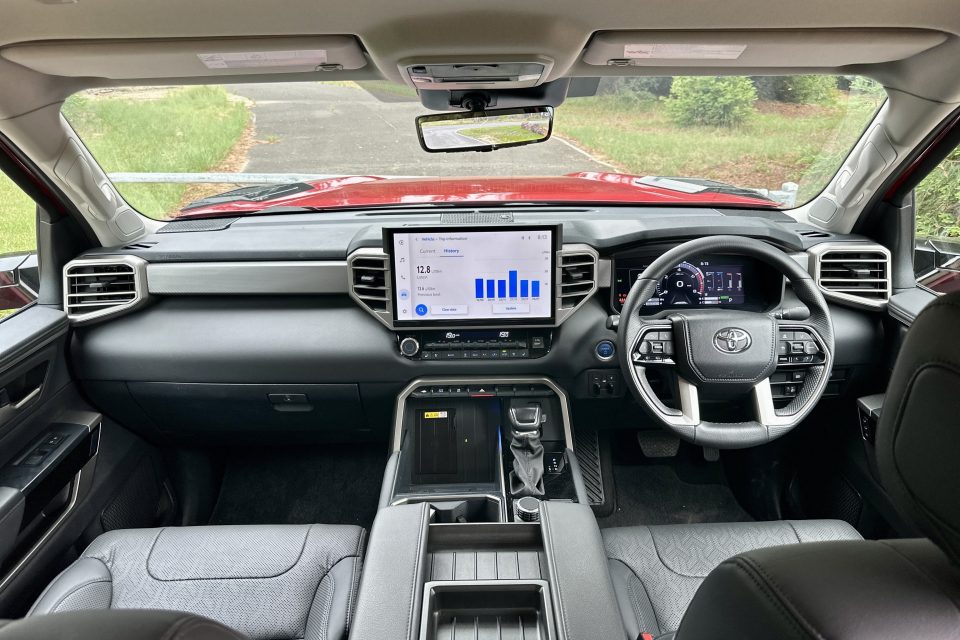
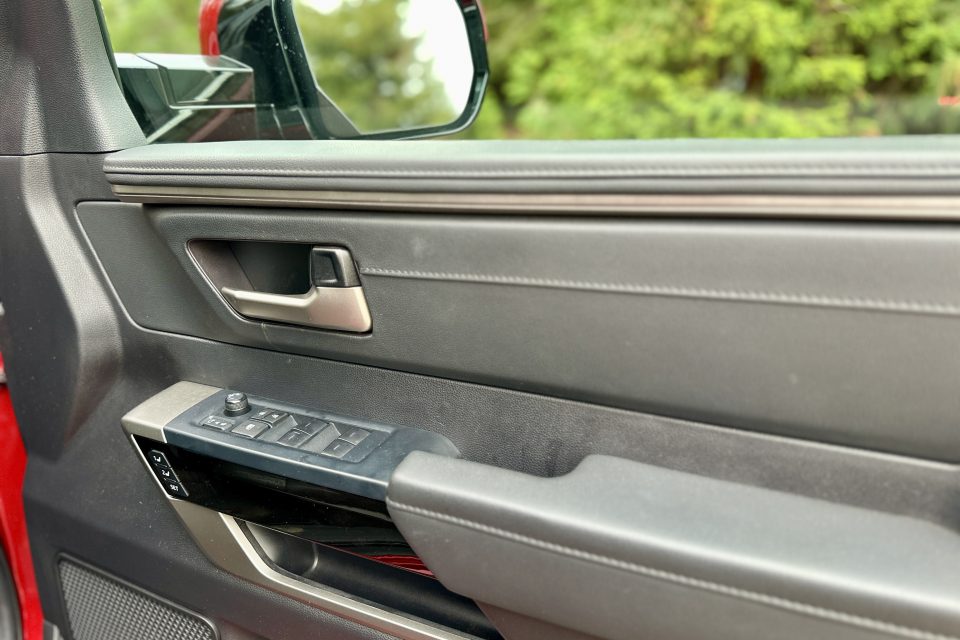
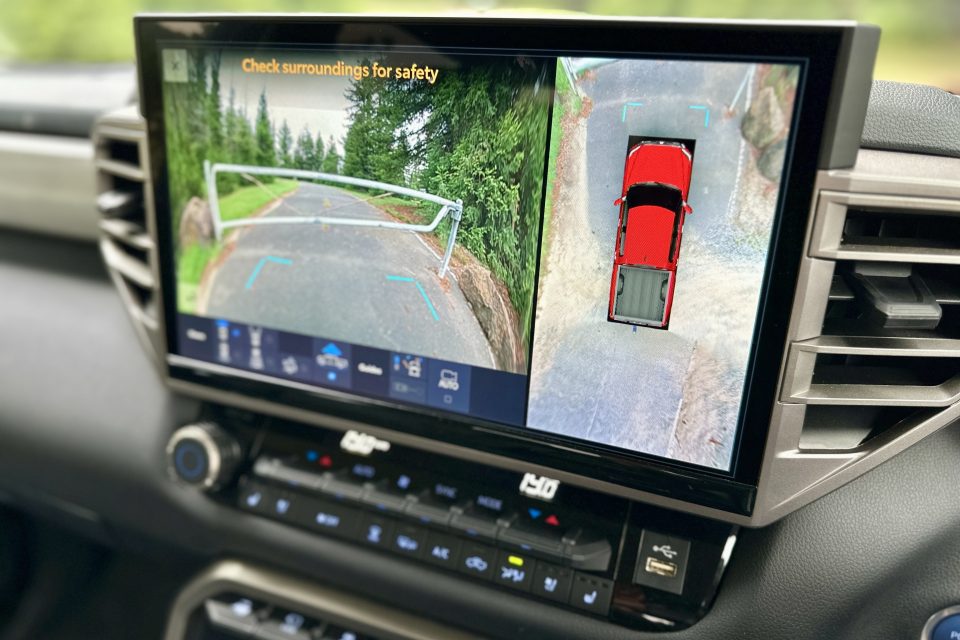
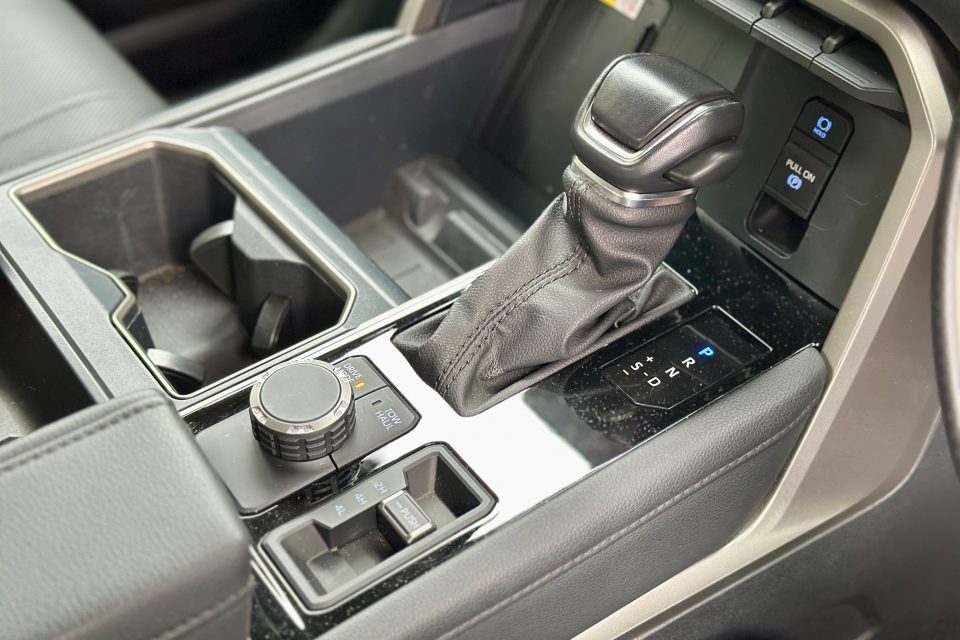
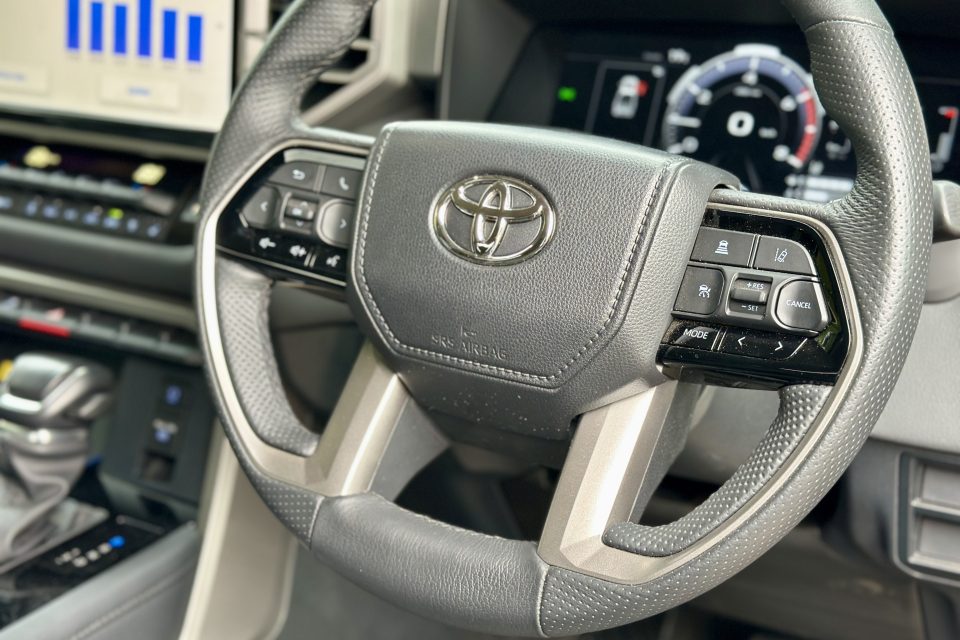
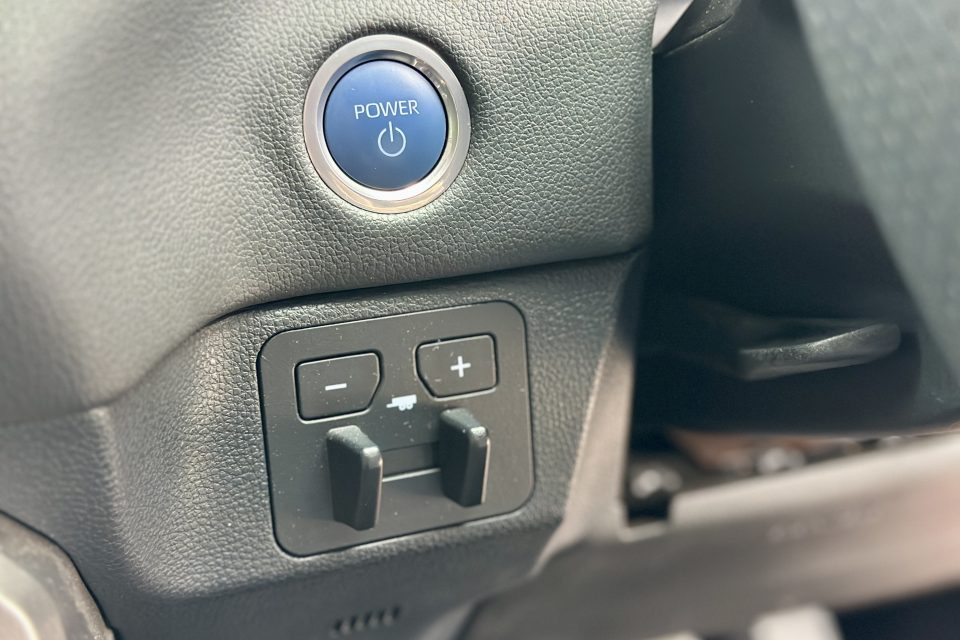
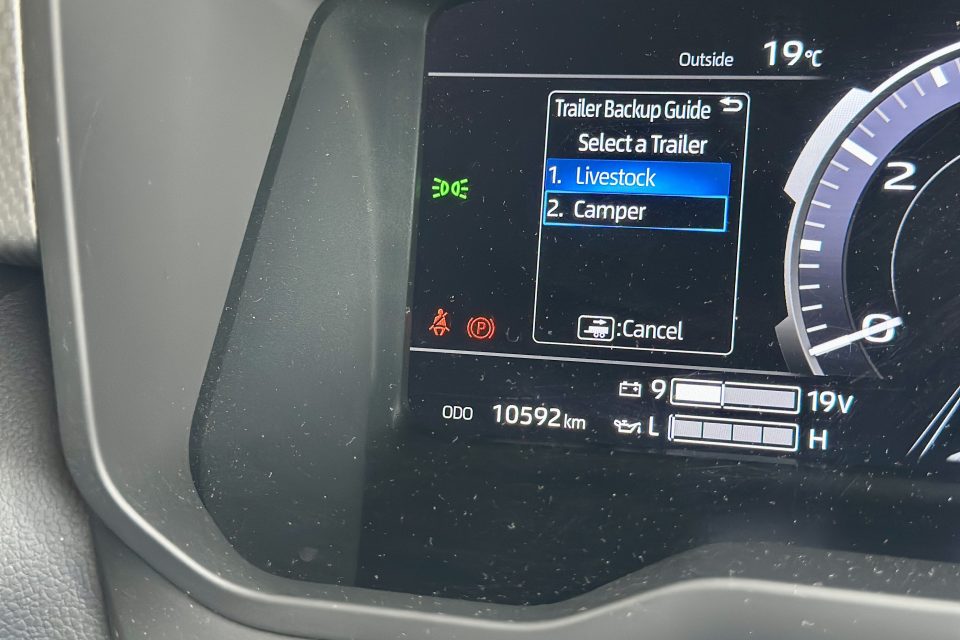
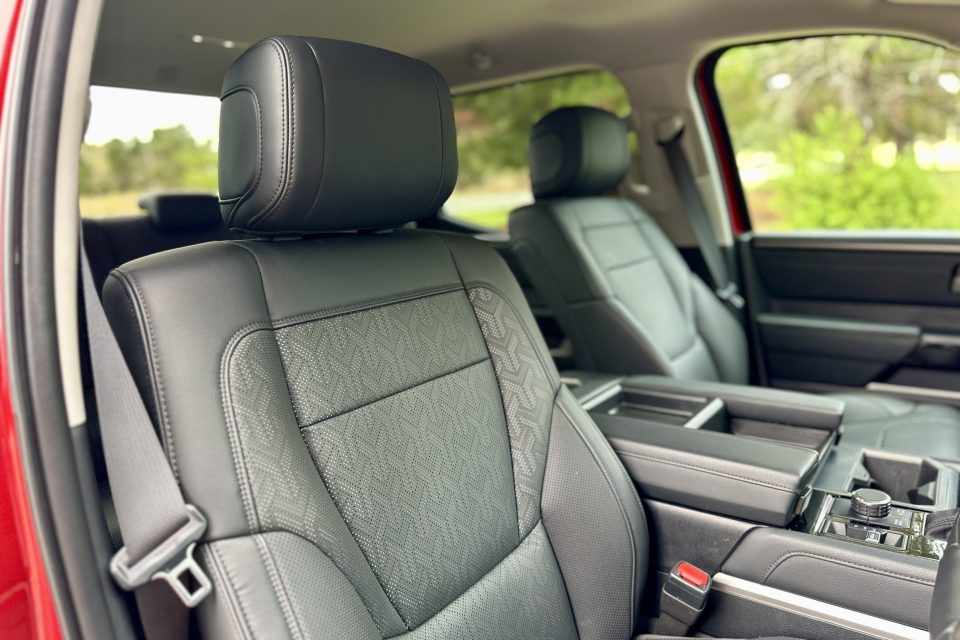
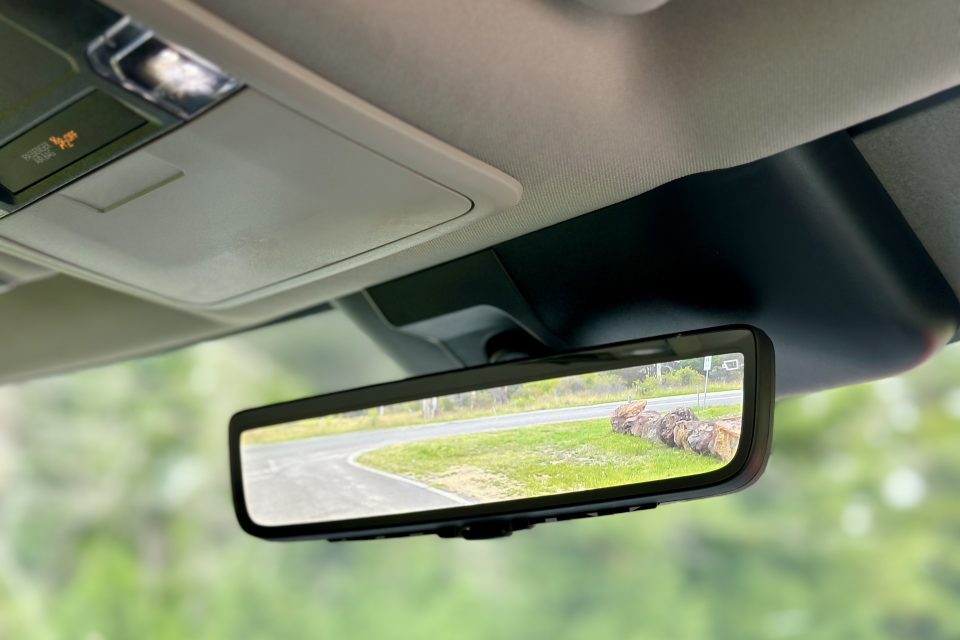
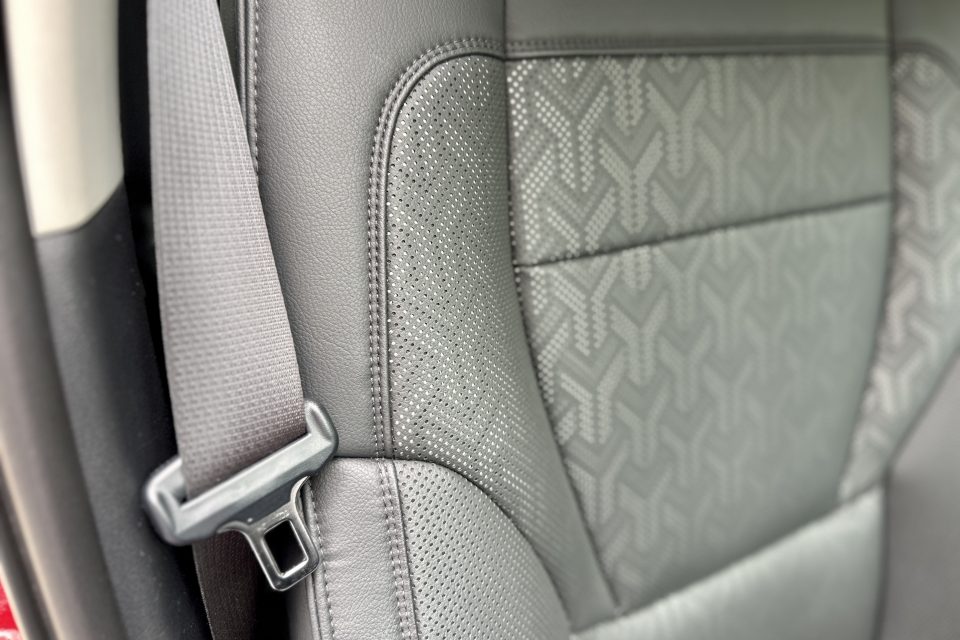
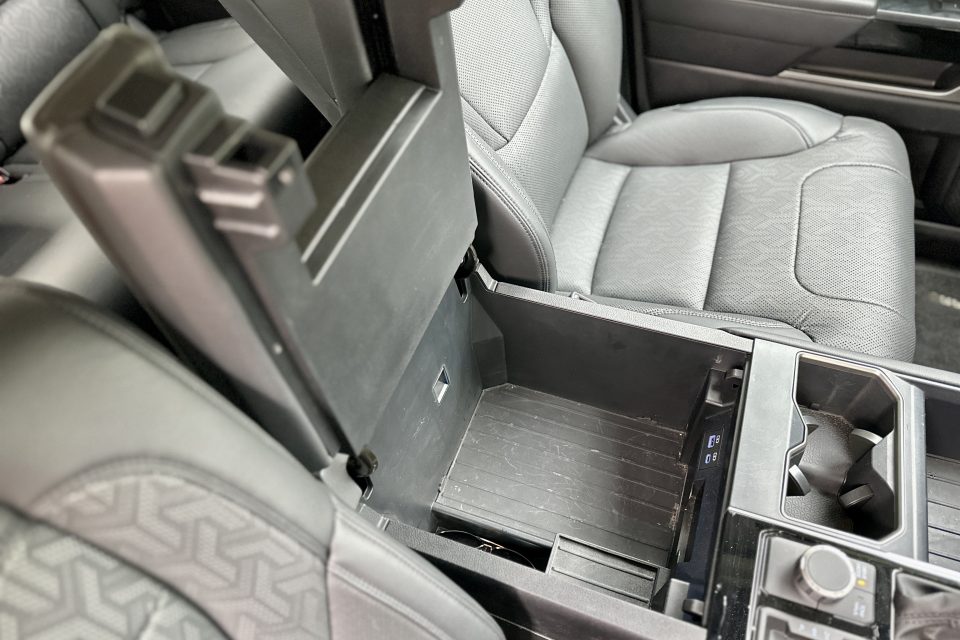
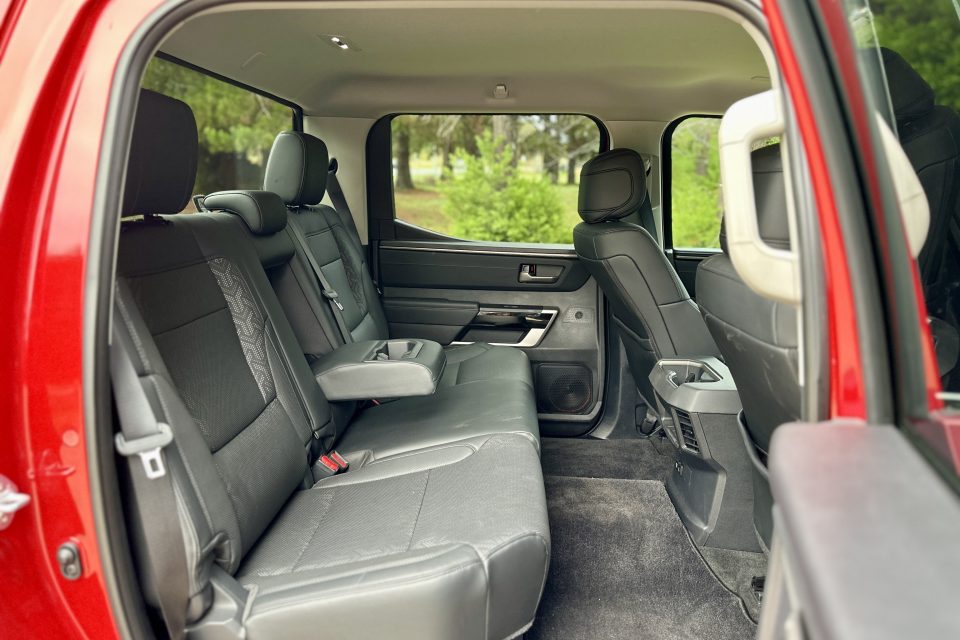
Despite the enormity, parking is actually really easy too. And I know this because my wife took it to the shops one time and proudly sent me a photo of it, reversed neatly in the space with the caption “first go”. I wish I could say it was all her skill, but there’s also a 360-degree camera.
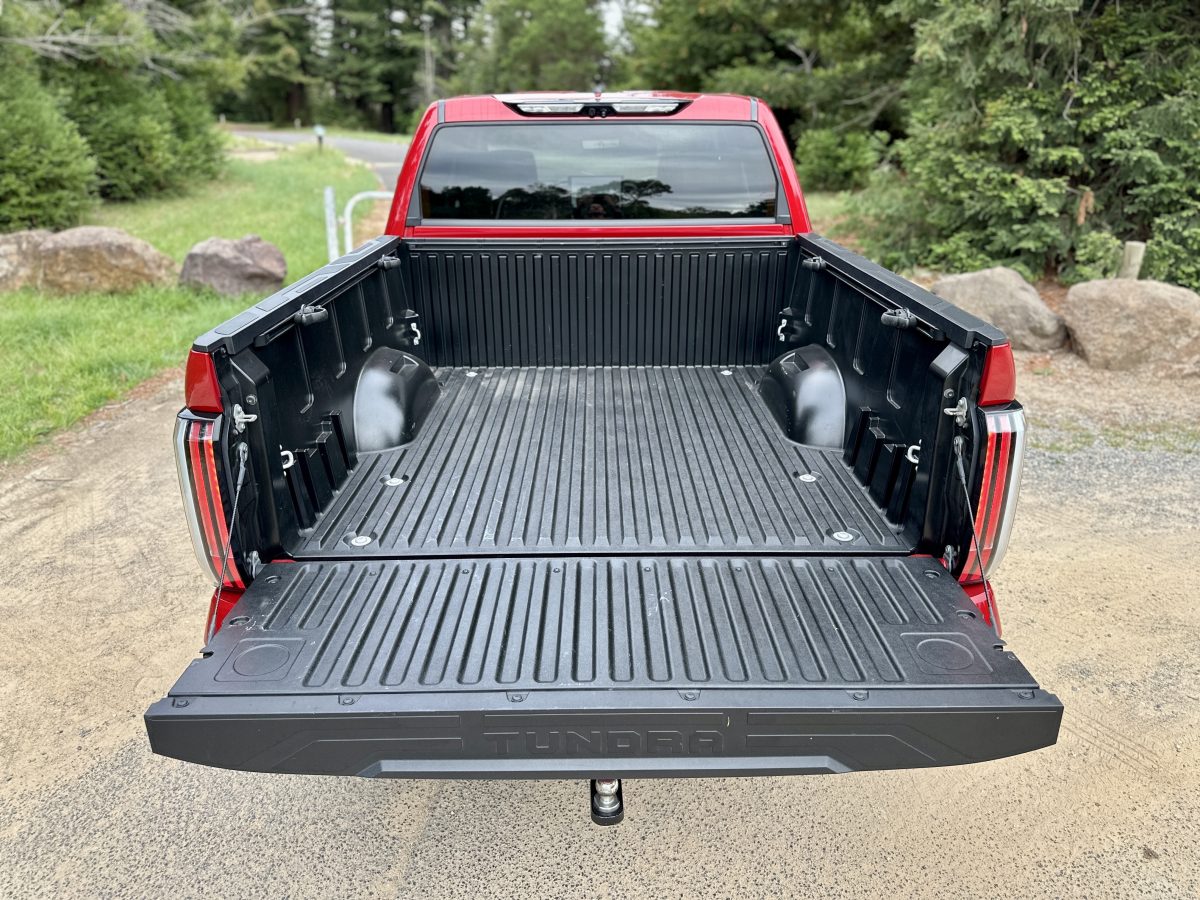
The tray measures 1670 mm long, 1540 mm wide (1230 mm between the arches) and 540 mm deep. Photo: James Coleman.
All the other safety features are present too, but maybe because Toyota suspects its American customers would fill their Tundra with bullets the moment it annoyed them, there are no beeps, and the lane-keeping assistance can be turned off with one click of a button on the steering wheel. Bliss.
And all of this, while racking up a really rather impressive (and almost unbelievable) average fuel consumption figure of 12.8 litres per 100 km.
The only downside is that when driving under electric power, it’s accompanied by an annoying whine that just seems wrong in a car – sorry, truck – like this.
Look, you don’t feel as cool behind the wheel of a Tundra as you would in a Chevy, RAM or F150. But you’re buying a Tundra because of Victor Sheppard. It’s a Toyota. So if you plan on carrying an oil rig in the back every day, you might need to get that bit checked in about 30 years.
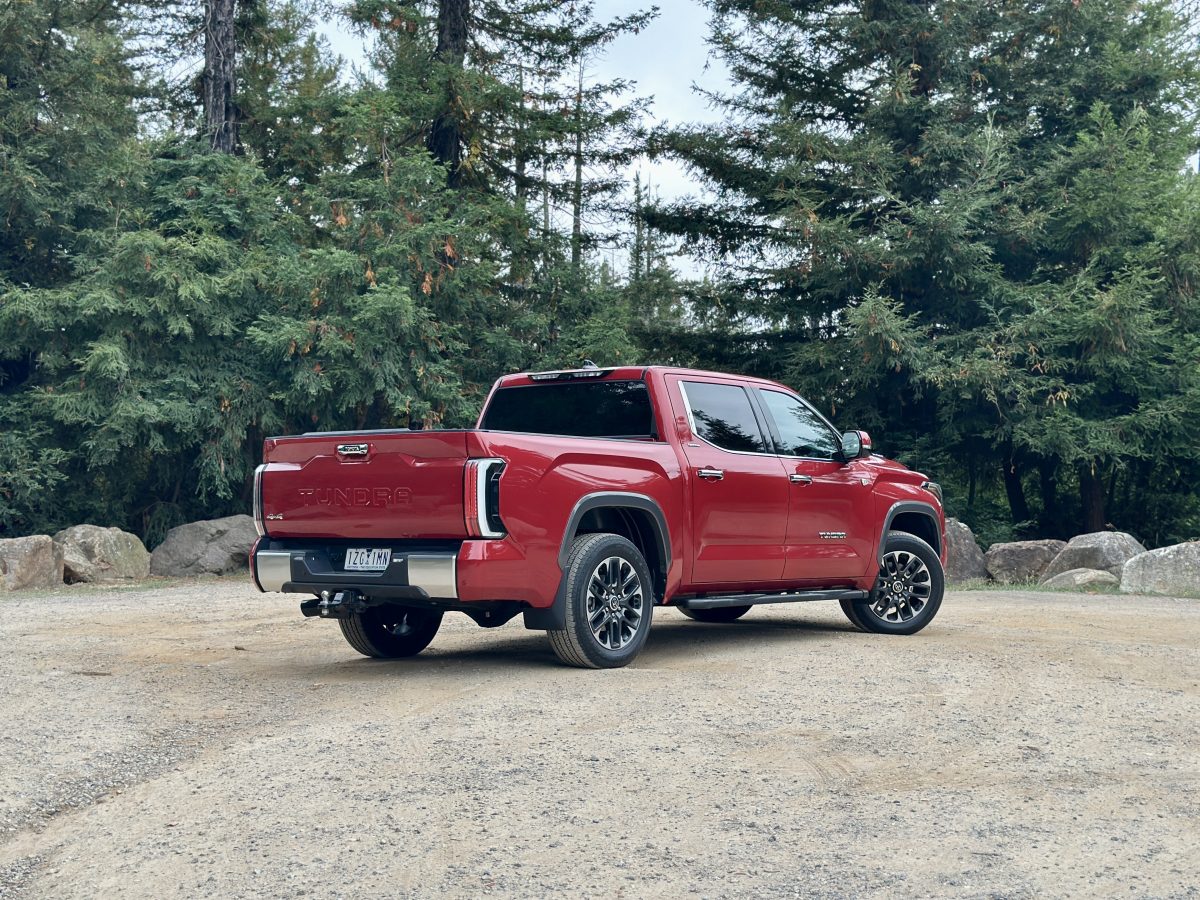
10,000 km on the clock, only 990,000 to go. Photo: James Coleman.
2025 Toyota Tundra Limited
- $155,990 (plus on-road costs)
- 3.4-litre V6 twin-turbo petrol-electric hybrid, 290 kW / 649 Nm
- 10-speed automatic, part-time 4WD
- 11.7 litres per 100 km (claimed fuel consumption), 122-litre fuel tank, 95 RON
- 0-100 km/h in 6.8 seconds
- 2778 kg.
Thanks to Toyota Australia for providing this car for testing. Region has no commercial arrangement with Toyota Australia.












